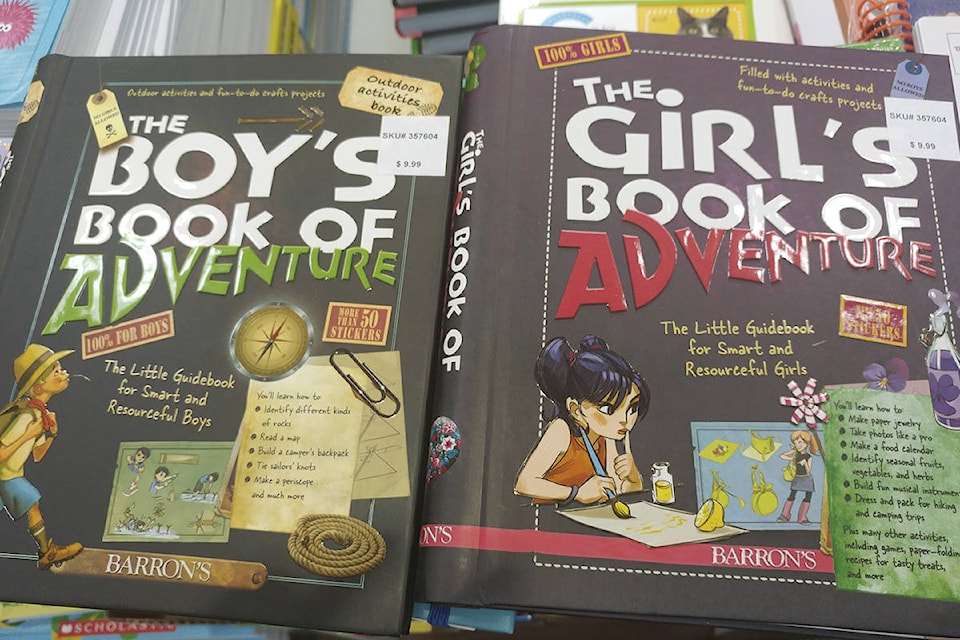A pair of children’s books have caught the eye of a Colwood mom and caused a stir on a local Facebook group.
Marie Ikonen, mother of two young daughters, noticed the books while shopping at Costco earlier this month. The books – respectively titled The Boy’s Book of Adventure and The Girl’s Book of Adventure – gave its young readers ideas for hobbies they could pursue and skills they could learn. The boy’s version gives readers instructions on how to build a compass, tie knots and read maps. Meanwhile, the girl’s edition explains how to weave baskets and make herbal teas, among other activities.
The girl’s book also includes some outdoor activities, but Ikonen felt both books were gender biased.
“It was stuff that was sort of focused around traditional gender roles, like the woman is in the house and in the kitchen and homemaking,” she said.
Neither book really fit in with what Ikonen’s daughters enjoy.
“[They] are interested in everything. They love anything to do with superheroes, they like going outside and playing in the dirt … They’re not little princesses but they can play princesses,” she said.
While she doesn’t have any sons, Ikonen says she can imagine that the boy’s book could be just as limiting.
“Our neighbour has a son who is four and he loves coming over and playing with the girls … I feel that any child should be allowed to do any of those things,” she said.
Ikonen posted her concerns on a private West Shore Facebook group, garnering a significant amount of attention. She says many parents agreed with her concerns, while others didn’t think the books were a big deal.
Royal Roads University professor Matthew Heinz believes that, while gender portrayals in children’s media may be improving, there is still progress that needs to be made.
Heinz – whose research focuses on gender identity and culture among other topics – cited a 2009 study that looked at the portrayal of both female and male characters.
While female characters have recently been portrayed participating in a greater range of activities, it still tends to be shown as unnatural.
“We shouldn’t need to portray the [hammer] as a male toy or a female toy, or even a male toy that female characters can play with. That still re-enforces the notion that the hammer is associated with male activity … It’s ‘oh it’s a girl, but she can also play with a hammer,’ as opposed to her being mechanically inclined,” Heinz noted.
On the other hand, male characters are rarely shown doing household chores such as cleaning or cooking even though, “we do know that in real life, men also take care of children, they go on paternity leave, they cook and do laundry,” he said.
Heinz brings another perspective to gender related issues, as he was assigned female at birth and transitioned to male in 2009.
While he grew up in a family that didn’t uphold “stereotypical gender expecations,” he wonders whether he might have transitioned earlier than his mid-40s if media potrayals of trans characters were more common in his youth.
“I didn’t have any images of male transgender characters anywhere. It took me an inordinate amount of time … to realize that that is how I best align my gender identity. I just had no concept for it,” he said.
Ideally, Heinz continued, children should be exposed to a wide variety of characters. “What we don’t show is then what we don’t create as a possibility,” he said.
Ikonen says she wasn’t surprised when she saw the books, adding that her girls are constantly exposed to media that suggests how they should behave and act. “It drives me mad. I don’t want my girls to think that because they’re a girl that they can’t do the same things as boys do.”
Publisher Barron’s Education Books did not respond to the Gazette’s request for comment.



